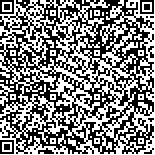| 摘要: |
| [摘要] 目的 观察悬吊核心肌群训练治疗腰椎间盘突出症的临床疗效及其对竖脊肌、多裂肌积分肌电值(iEMG)的影响。方法 选择2018-01~2020-11吉林省一汽总医院康复医学科收治的64例腰椎间盘突出症患者,采用随机数字表法将其分为观察组和对照组,每组32例。对照组采用常规康复治疗,观察组在对照组治疗方案基础上增加悬吊核心肌群训练。比较两组治疗前及治疗后4周的竖脊肌iEMG、多裂肌iEMG、视觉模拟评分量表(VAS)评分和日本骨科协会(JOA)下背痛评分。结果 治疗前两组患侧和健侧的竖脊肌、多裂肌iEMG比较差异无统计学意义(P>0.05)。治疗4周后,观察组患侧竖脊肌和多裂肌的iEMG显著大于对照组(P<0.05),且与同组健侧比较差异无统计学意义(P>0.05)。与治疗前比较,治疗4周后两组VAS评分显著降低,JOA下背痛评分显著升高(P<0.05),且观察组VAS评分显著低于对照组,而JOA下背痛评分显著高于对照组(P<0.05)。结论 悬吊核心肌群训练有利于腰椎间盘突出症患者恢复肌力,疗效显著。 |
| 关键词: 腰椎间盘突出症 康复训练 核心肌群 疼痛 肌力 |
| DOI:10.3969/j.issn.1674-3806.2021.04.09 |
| 分类号:R 493 |
| 基金项目:吉林省卫生健康科技创新项目(编号:2019ZC019) |
|
| Clinical efficacy of suspended core muscle group training in treatment of lumbar intervertebral disc herniation |
|
LI De-quan, LI Jia-hang, JIA Dan, et al.
|
|
Department of Rehabilitation Medicine, Jilin Province FAW General Hospital, Changchun 130062, China
|
| Abstract: |
| [Abstract] Objective To observe the clinical efficacy of suspended core muscle group training in treatment of lumbar intervertebral disc herniation, and its effects on the integral values of electromyogram(iEMGs) of erector spine muscles and multifidus muscles. Methods Sixty-four patients with lumbar intervertebral disc herniation admitted to the Department of Rehabilitation Medicine, Jilin Province FAW General Hospital were selected from January 2018 to November 2020, and they were divided into observation group and control group by random number table method, with 32 cases in each group. The control group received conventional rehabilitation treatment, and the observation group received the same treatment as the control group plus suspended core muscle group training. The iEMG of erector spine muscles, the iEMG of multifidus muscles, the Visual Analogue Scale(VAS) scores and the Japanese Orthopaedic Association(JOA) low back pain scores were compared between the two groups before treatment and 4 weeks after treatment. Results Before treatment, there were no significant differences in the iEMGs of erector spine muscles and multifidus muscles on the affected side and the healthy side between the two groups(P>0.05). After 4 weeks of treatment, the iEMGs of erector spine muscles and multifidus muscles on the affected side of the observation group were significantly higher than those of the control group(P<0.05), and there were no significant differences compared with those on the healthy side of the same group(P>0.05). Compared with those before treatment, the VAS scores significantly decreased in the two groups after 4 weeks of treatment, and the JOA lower back pain scores increased significantly(P<0.05). The VAS scores of the observation group were significantly lower than those of the control group, while the JOA low back pain scores of the observation group were significantly higher than those of the control group(P<0.05). Conclusion Suspended core muscle group training is beneficial to the recovery of muscle strength in patients with lumbar intervertebral disc herniation, and the treatment effect is remarkable. |
| Key words: Lumbar intervertebral disc herniation Rehabilitation training Core muscle group Pain Muscle strength |

